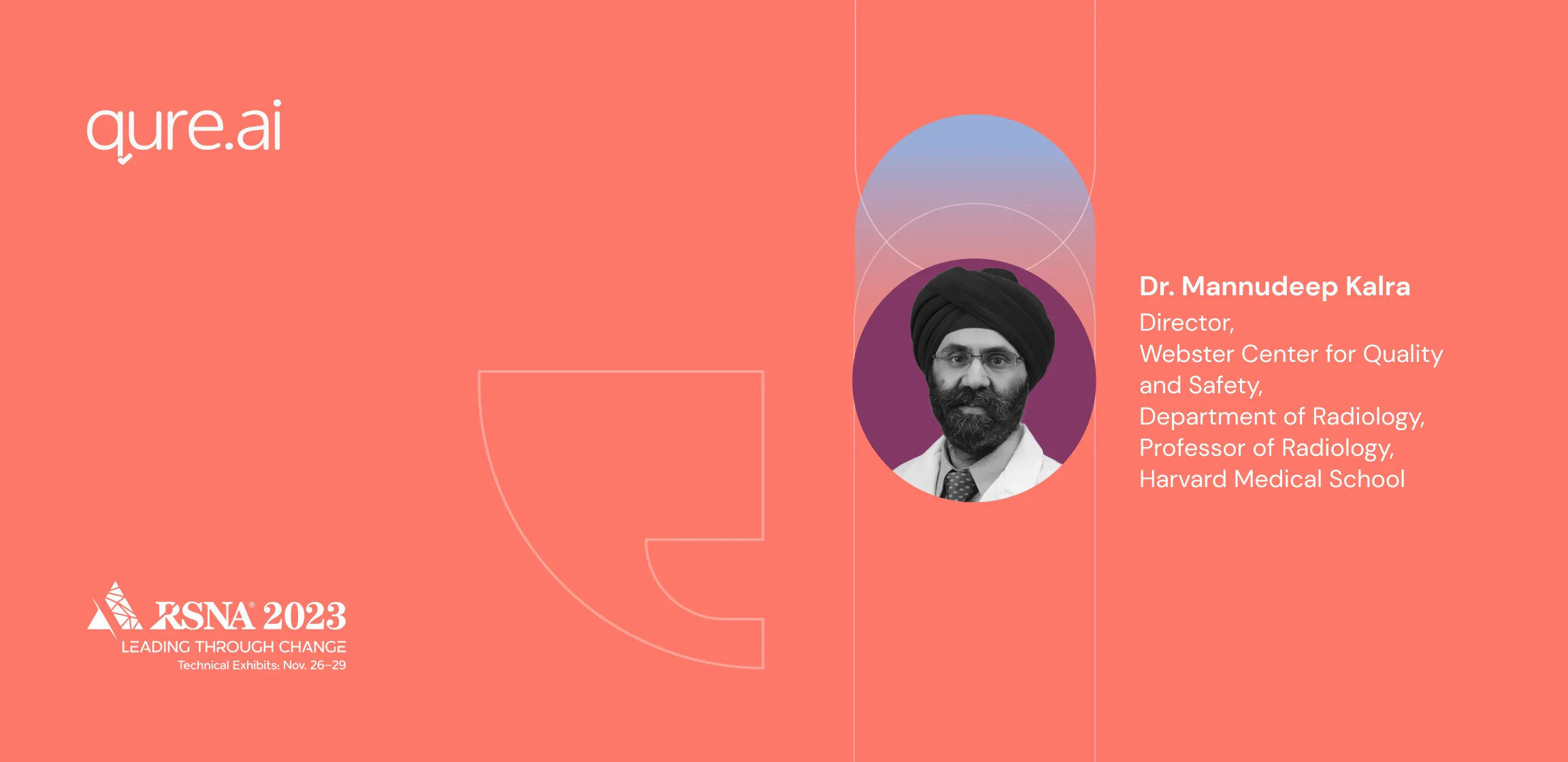The conversation between Qure.ai’s Charu Arora and Dr. Mannudeep Kalra, a renowned thoracic radiologist and Professor of Radiology at Harvard Medical School, revolves around the use of artificial intelligence (AI) in thoracic radiology, discussing its current applications, potential in care coordination, impact on patient outcomes, and future developments.
Back
Introduction:
Dr. Mannudeep Kalra is introduced by Charu Arora. Dr. Kalra also holds leadership roles at the Mass General Hospital in Boston, including the Director of the MGH Webster Center for Quality and Safety and the Scientific Director of MGB Clinical Data Science Office. His work focuses on advancing radiology through innovative research and improving patient care.
Key Points:
- AI in Radiology: Dr. Kalra discusses AI's role in improving efficiency and quality in thoracic radiology. He highlights AI applications in triaging urgent cases, parsing radiology exams, and workload distribution among radiologists.
- AI in Care Coordination: In underserved areas, AI tools help in diagnosing diseases like tuberculosis where radiologist availability is limited. Dr. Kalra also mentions AI's role in developed countries for critical findings and quantitative imaging tasks.
- Future of AI in Radiology: Dr. Kalra foresees AI evolving from triage to more complex detection tasks, handling multiple findings, and potentially achieving autonomy in reporting for quantifiable findings. He emphasizes the potential integration of AI with clinical data for more accurate diagnoses.
- AI Impact on Patients: Dr. Kalra shares examples of AI benefiting patient outcomes, such as quicker reporting of critical findings like pulmonary embolism. He also notes the increased patient engagement with AI outputs and the potential for AI in direct patient communication.
Main Synopsis of Discussion: The discussion encompasses AI's role in enhancing quality and safety in thoracic imaging, along with the potential for AI to contribute to autonomous reporting. Dr. Kalra underscores the importance of AI in efficiently interpreting imaging results, prioritizing patient care, and integrating with healthcare systems for comprehensive patient management.
Conclusion: The discussion concludes with Dr. Kalra expressing optimism about AI's evolving role in thoracic radiology, particularly in improving efficiency, diagnostic accuracy, and patient involvement. The potential for AI to directly communicate with patients and assist in clinical decision-making was highlighted as a key area of future development.
